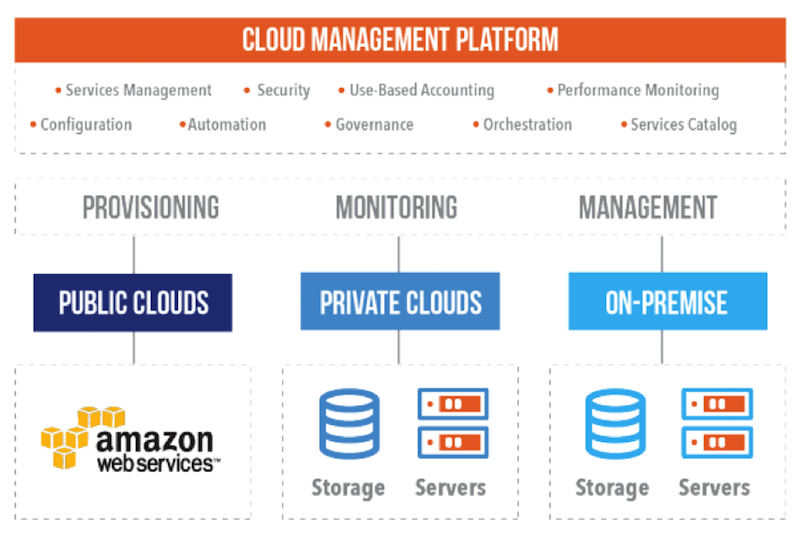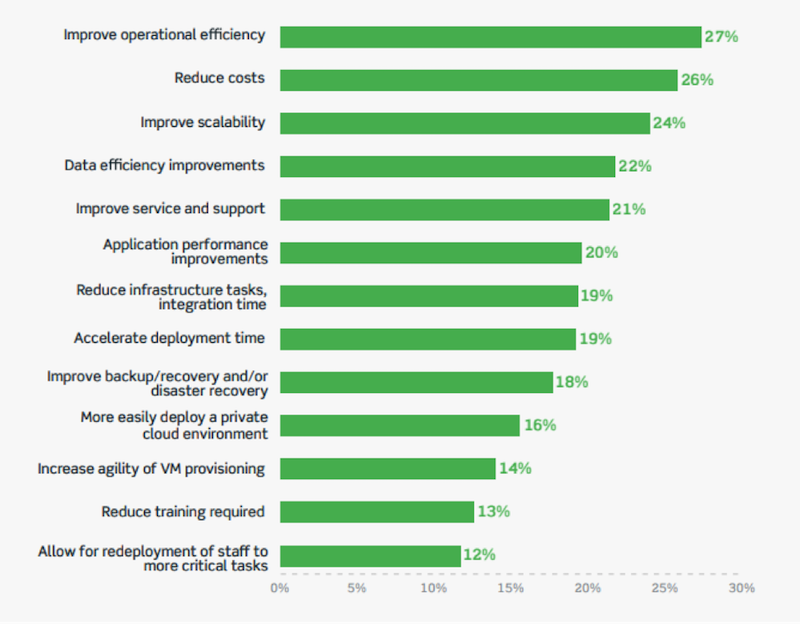Hyperconverged infrastructure (HCI) streamlines the deployment and management of IT resources in the enterprise. HCI uses software to unify servers, networks and storage arrays into an agile software-defined data center that scales with the needs of businesses.
Embracing hyperconverged infrastructure means moving away from legacy IT infrastructure and hardware architecture. Such a move calls not just for upfront investments, but also an organization-wide show of faith in the switch from dated technologies to a cloud-based, software-driven infrastructure. This technology combines the varied functions of computing, storage, and networking into a single platform. There are compelling reasons for organizations to adopt an HCI:
Costs: Traditional SANs have a high TCO due to software licenses, power, cooling and frequent upgradation needs (both hardware and software). Then, there are multiple vendors and specialists who are needed to manage disparate information systems. Implementing an HCI reduces all of these to a one-time expense.
Complexity: A traditional infrastructure keeps growing in complexity with the addition of racks, cables, switches, servers and software. Multiple vendors and service providers are needed to manage all of these. HCI consolidates the key elements of the datacenter and simplifies operations with a single point of management.
Cloud: Legacy infrastructures aren't built to scale to the multi-cloud, hybrid or even private cloud requirements of present-day IT operations. An HCI solution lets organizations instantly scale out capacity in the data center and often provide connectivity to hybrid and multi-cloud architectures.
The last couple of years have been a testimony to the confidence that organizations large and small have shown in the power of hyperconverged infrastructure.
Research by the Evaluator Group reveals that 79% of large enterprises are expanding their use of HCI. This growing acceptance of hyperconverged infrastructure is not just limited to peripheral cloud applications or deployments. HCI is firmly making its way into mainstream workloads and lending its flexibility and ease of use to key organizational workloads as well. By 2020, 20% of business-critical applications currently deployed on three-tier IT infrastructure will transition to hyperconverged infrastructure, according to Forecast Analysis: Integrated Systems, Worldwide, 2Q18 Update by Gartner.
The evolving face of HCI offers many compelling reasons for businesses to switch over from legacy infrastructure.
A Penny Saved is a Penny Earned
Hyperconverged infrastructure relies on commodity hardware, unified by an overarching layer of software that combines the typical three tiers of legacy IT infrastructure, including computing, storage and networking equipment. Specialized equipment doesn’t need to be bought, maintained and upgraded year after year.
With hyperconverged infrastructure, a single software platform performs all these functions and offers a “single pane of glass” to view, track and manage each task with pinpoint precision.







